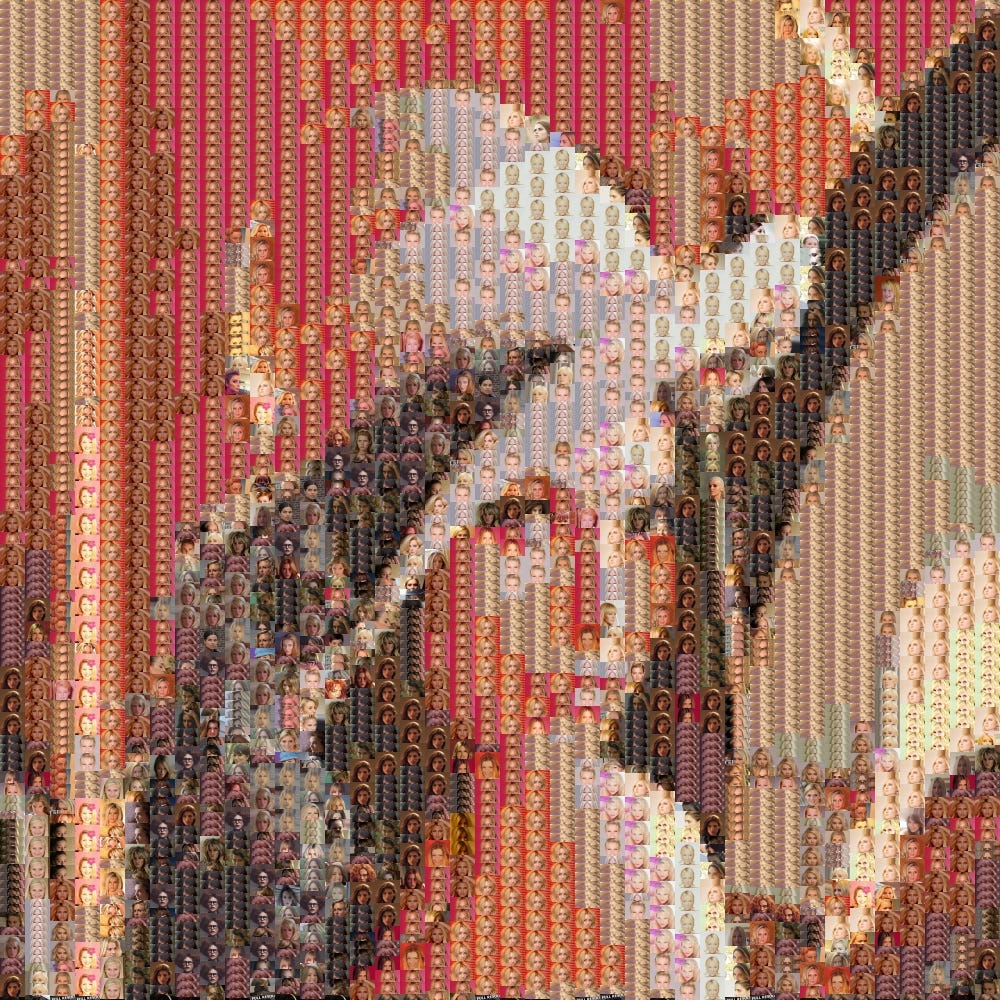Before going to larger tiles I wanted to check if the aspect of tiles has any influence on the perceived image. Currently, all tests were made with square aspect images, that is images whose height and width are all the same. when looked at from afar those square images mimic pixels. But, what if images are not square? In real life, not all images are perfectly square, and cropping them to conform to that loses details especially if the subject is placed in a golden ratio or some other artistic style.
First, let’s generate Lenna with 25x25 square tiles using the Mean Square Error algorithm and our dataset of center aligned faces as discussed in Part1.
Next, height randomization to 50% of tile height is added when images are resized and buffered making them all with constant width but random height. Cropped images are vertically centered. In the actual scenario, input pictures would not be randomly cropped as they would all have different aspects, ratios of height and width.
It takes almost 3x longer to complete with different aspects which is not surprising.
The randomness of height makes it possible to run the generation several times and get different results.
To me, if input image aspects are preserved and not cropped the output image looks like it preserved more of the original image details but lacks uniformity of the square “pixelated” version. Still, in the case of mosaics, the more detail we manage to capture the better so preserving the image aspect wins but I believe it would depend on use.









